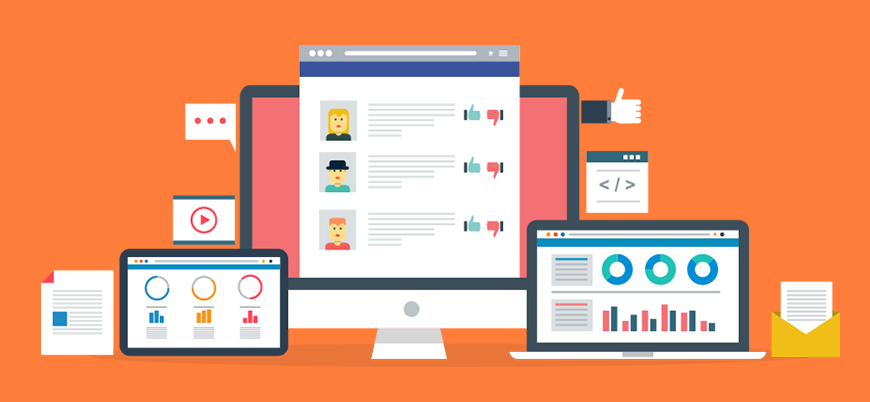We are all aware that Knowledge is Power and knowing (and not knowing) your customer and competition could spell disaster for any business. This is more so in today’s fast-paced world of real-time social media (SM) outpourings from human and organizational SM handles. While knowledge is crucial for businesses, harvesting Gigabytes of Data populating your servers and social media department can become a monumental task. Unless the data is converted into an actionable plan or strategy playbook, the exercise in social media monitoring would become redundant.
An evolved strategy will allow you to stay ahead of the curve and respond to any issues or opportunities as they arise. Here’s where Real-time Social Media Monitoring comes into play. This process involves tracking and analyzing social media conversations about your brand or industry in real-time.
Internet of Things & its Impact on Social Media Presence
The Internet of Things (IoT) can play a role in social media monitoring in several ways. For example, IoT devices can be used to collect data about customer behavior, such as how they use products or services. This data can then be used to improve products and services, as well as to target marketing campaigns more effectively.
IoT devices can also be used to collect data about social media conversations. This data can then be used to identify trends, track sentiment, and identify potential problems. For example, if many people are tweeting about a product defect, the company can use this information to quickly address the issue.
Overall, the IoT can be a valuable tool for best social media monitoring. By collecting data from IoT devices, businesses can gain a deeper understanding of their customers and their social media conversations. This information can then be used to improve products and services, target marketing campaigns more effectively, and identify and address potential problems.
How IoT Can Be Used for Social Media Monitoring
Real-time social media monitoring is an essential tool for any business that wants to stay ahead of the curve and build a strong online reputation. By monitoring social media conversations in real-time, you can identify and respond to any issues or opportunities as they arise. You can also learn more about your target audience and develop marketing campaigns and products that resonate with them.
A company that sells cars could use IoT data to track how people are driving their cars. This data could be used to identify potential problems, such as if a car is overheating or if the brakes are wearing down. This information could be used to send alerts to customers so that they can take action to prevent problems from occurring.
Similarly, a company that sells clothing could use IoT data to track how people are wearing their clothes. This data could then be used to identify trends, such as which colors of clothing are most popular or which sizes are in high demand. This information could be used to target marketing campaigns more effectively, such as running ads for new clothing items that are popular with customers.
These are just a few examples of how IoT can be used for social media monitoring. As IoT continues to evolve, we can expect to see even more innovative ways to use this technology to collect and analyze social media data.
Outsourcing social media monitoring can play a significant role in helping companies adapt to digitalization, IoT and automation. It provides expertise, scalability, access to advanced tools, and strategic insights. This can help businesses optimize resources, enhance customer engagement, make data-driven decisions, and stay competitive.
For instance, Nike had outsourced its social media monitoring services, which was able to help Nike identify and respond to the negative sentiment on social media before it escalated. This helped Nike to protect its brand reputation and improve its customer service. Another instance is how Starbucks leveraged social media monitoring outsourcing company and streamlined its customer service and increased customer satisfaction.
Here are direct and indirect ways in which outsourcing can contribute to the digitalization of social media monitoring:
Direct Ways:
1. Expertise in Social Media Analytics: Outsourcing social media monitoring to dedicated experts in the domain can help companies stay ahead of the digital curve. These professionals have the knowledge and tools to monitor and analyze social media data, which can aid companies identify trends, improve customer service, and protect their brand reputation.
2. Scalability and Flexibility: With social media monitoring outsourced to a competent third-party vendor, companies can seamlessly scale and adapt to changing digital needs. Outsourcing partners can quickly adjust resources, adapt to new platforms, and align strategies with evolving business goals.
3. Access to Advanced Monitoring Tools: Outsourcing service providers invest in the latest tools and platforms, which can save companies money on upfront investments. Being able to use advanced tools and technologies enables companies to run successful social media campaigns and minimize losses incurred in such endeavors.
4. Real-time Monitoring and Response: Outsourcing social media monitoring can help companies respond to customer queries in real-time. This can help build a positive brand image and address customer needs promptly.
Here are some additional benefits of real-time social media monitoring:
- Identify and respond to potential crises quickly.
- Gather customer feedback and insights in real-time.
- Track the effectiveness of social media campaigns.
- Identify and engage with influencers.
- Build relationships with customers.
- Generate leads and sales.
Indirect Ways:
1. Focus on Core Competencies: Outsourcing social media monitoring can help companies free up internal resources and focus on their core competencies. This is because outsourcing providers have the expertise and resources to monitor social media channels effectively. This frees up internal teams to focus on other tasks, such as product development, customer experience, and innovation.
2. Cost Optimization: Outsourcing social media monitoring can lead to cost optimization by eliminating the need for investing in specialized staff, training, infrastructure, and ongoing technology updates. Instead, companies can leverage the expertise of outsourcing partners at a fraction of the cost, allowing them to allocate resources more efficiently to other digital initiatives.
3. Strategic Insights and Recommendations: Outsourcing providers can offer strategic insights and recommendations based on collected data. This can help companies make data-driven decisions, refine digital strategies, identify market trends, and improve customer engagement.
4. Risk Mitigation: Digitalization has created new opportunities for businesses, but it has also introduced new risks. Risks to brand reputation, privacy concerns, and cyber threats must be addressed at the outset, to ensure long-term assurance of brand value and customer trust. Outsourcing partners specializing in social media monitoring can help mitigate these risks by implementing robust security measures, monitoring brand sentiment, and proactively addressing potential issues. This allows companies to navigate the digital landscape with greater confidence.
Outsourcing social media monitoring can be a great way for businesses to save time, and resources, and improve their social media presence. However, it is important to do your research and choose a reputable provider to ensure that you get the best possible service.
If you are looking for a reputable social media monitoring provider, Research Optimus would be happy to discuss your needs with you. We have a team of experienced professionals who can help you to improve your social media presence and reach your target audience. Contact us today to learn more about our services.
-Research Optimus



